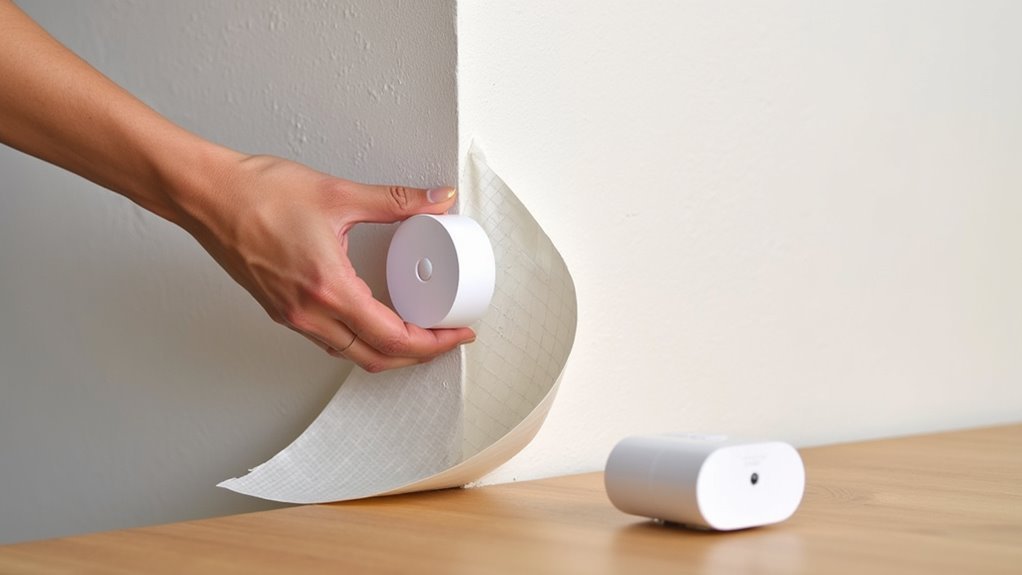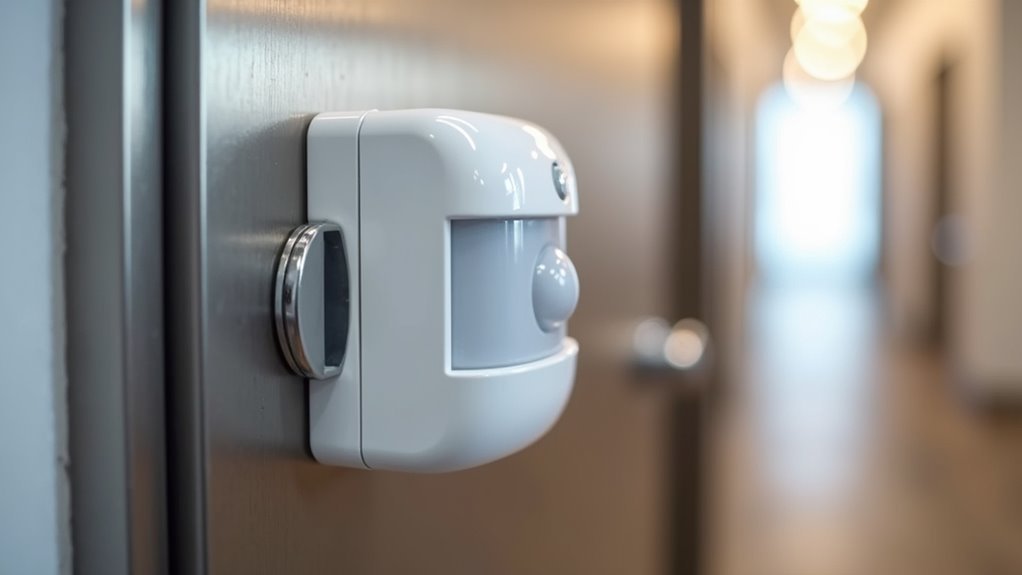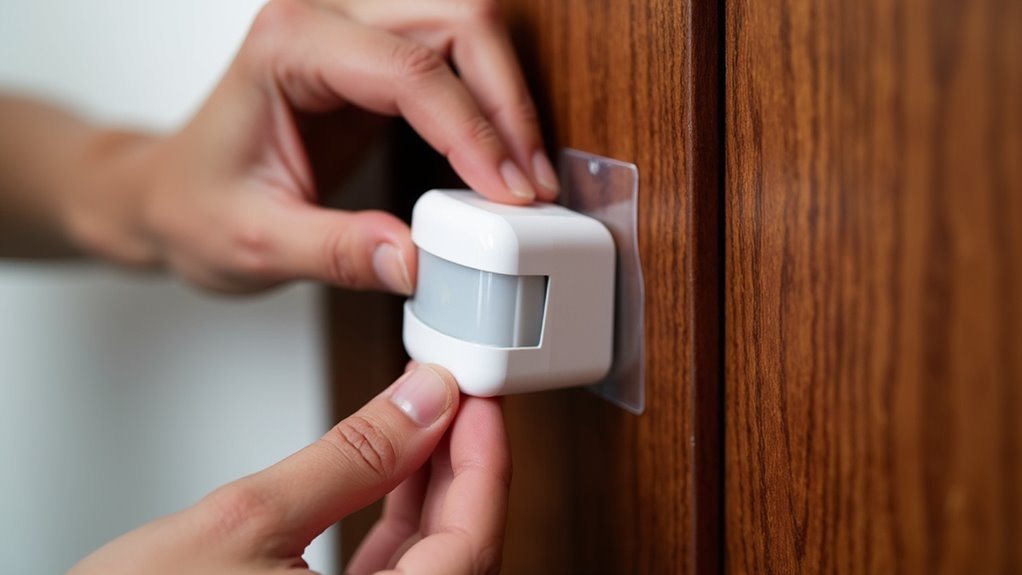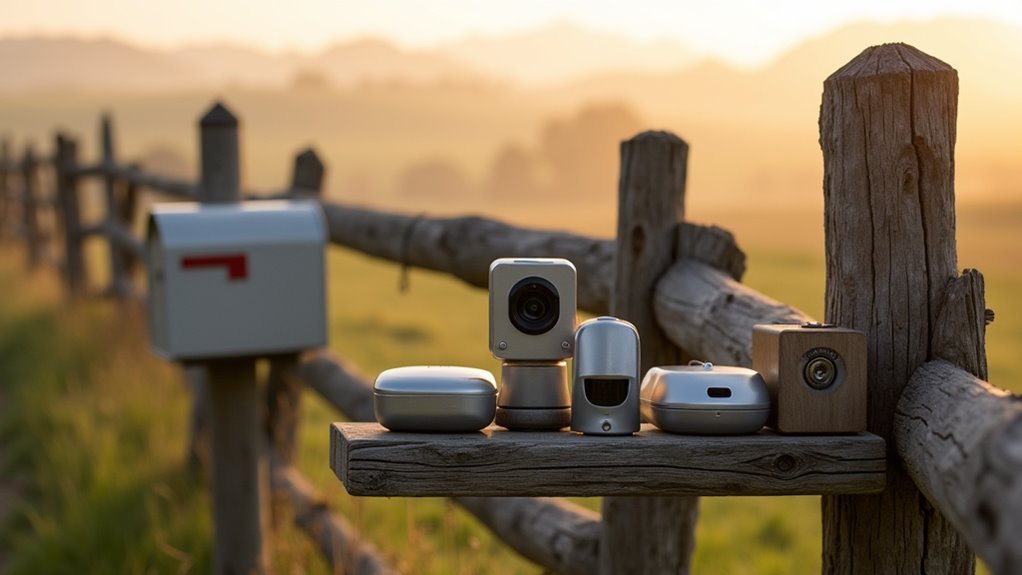You’ve probably hesitated to install motion sensors because drilling holes seems like too much commitment or you’re renting and can’t make permanent changes. The good news is that modern mounting solutions have evolved far beyond traditional screw-and-anchor methods. Whether you’re dealing with drywall, metal surfaces, or tricky corners, there are reliable alternatives that’ll secure your sensors effectively. These methods might actually surprise you with their durability and versatility.
Adhesive Mounting Methods for Motion Sensors

When you’re looking to install motion sensors without damaging your walls, adhesive mounting offers one of the most straightforward solutions.
These adhesive mounting methods typically use high-strength double-sided tape or adhesive strips that securely hold your sensor without drilling holes.
Before applying any adhesive, you’ll need to thoroughly clean and dry the surface since dust and grease can reduce effectiveness.
Surface preparation is crucial for adhesive success—remove all dust, dirt, and grease before mounting your motion sensor.
Many motion sensors come with pre-applied adhesive pads or include adhesive tubes for quick setup.
Follow the manufacturer’s instructions carefully, ensuring you distribute the adhesive evenly for ideal security.
After installation, allow the adhesive to cure for approximately 12 hours to achieve maximum bond strength before activating your motion sensor.
Double-Sided Tape Installation Techniques
Double-sided tape frequently provides the most accessible no-drill installation method for motion sensors, requiring minimal tools and offering immediate results.
You’ll need heavy-duty double-sided tape that can support your sensor’s weight, as lighter options won’t provide adequate long-term stability.
Before applying, clean both the mounting surface and tape thoroughly to guarantee maximum adhesion.
Position your sensor carefully, then apply firm pressure for at least 30 seconds to create a strong bond.
For outdoor installations, choose weather-resistant double-sided tape that withstands environmental conditions without deteriorating.
Once applied, allow the adhesive to cure for 24 hours before attaching your motion sensor.
This waiting period guarantees ideal hold and performance for your no-drill installation.
Magnetic Mount Solutions for Metal Surfaces

Magnetic mount solutions offer an exceptional alternative when you’re installing motion sensors on metal surfaces like steel doors, appliance sides, or metal siding.
These mounts feature strong magnets that securely hold your sensors in place without requiring screws or adhesives. You’ll find magnetic mounts compatible with various motion sensor models, making them versatile for different installations.
Installation couldn’t be simpler – just position your motion sensor against the metal surface and let the magnets secure it instantly. No tools needed.
Effortless installation with magnetic mounts – simply position your sensor and the magnets do the rest, no drilling required.
This method proves especially valuable for temporary setups or rental properties where drilling isn’t permitted. You can easily reposition your sensors whenever necessary, and the stable magnetic connection guarantees reliable operation while eliminating the risk of your device falling.
Corner and Bracket Mounting Systems
Corner and bracket mounting systems provide three versatile approaches for securing motion sensors without drilling into your main surfaces.
Corner mounts from vendors like Amazon offer secure screw or nail installation, creating stable solutions for hard-to-reach areas. You can enhance security on wooden walls by adding small brad nails to these mounts for more robust installations.
Gutter camera mounts adapt perfectly for motion sensors, clamping securely onto rain gutters without requiring screws. This makes them excellent for outdoor installations where traditional mounting isn’t feasible.
Over-the-door hook mounting uses stainless steel hooks that you can modify for thicker doors, achieving higher sensor placement to reduce tampering risks.
| Mount Type | Surface | Installation | Stability |
|---|---|---|---|
| Corner mounts | Wood/drywall | Screws/nails | High |
| Gutter mounts | Metal gutters | Clamp-on | Medium-high |
| Door hooks | Door frames | Hook-over | Medium |
| Heavy-duty tape | Flat surfaces | Adhesive | Medium |
| Modified brackets | Various | Adaptable | Variable |
Door and Window Frame Attachment Options

Door and window frames offer prime real estate for motion sensor placement, building on the mounting flexibility you’ve already explored with corner systems.
Magnetic mounts excel when you’re working with metal frames, creating strong bonds that won’t slip while allowing easy repositioning. For quick installations, adhesive strips and double-sided mounting tape provide secure holds without surface damage.
Velcro strips offer the ultimate flexibility – you can remove and reattach sensors whenever needed while maintaining solid placement.
Adjustable clamps and brackets designed for frame edges grip snugly without leaving marks, perfect for rental properties. These frame-based solutions work excellently with various security devices, including video doorbells, creating extensive monitoring coverage around entry points without permanent modifications.
Frequently Asked Questions
What Are the Three Types of Motion Sensors?
You’ll encounter three main motion sensor types: passive infrared sensors that detect heat changes, microwave sensors that emit pulses to measure reflections, and ultrasonic sensors that use sound waves to identify movement.
How to Wire the Motion Sensor?
Turn off power at the breaker first. Connect color-coded wires using wire strippers and connectors – black to live, white to neutral, green to ground. Secure connections with electrical tape, then test functionality.
How to Override Motion Sensor Light?
You can override motion sensor lights by toggling the wall switch off and on quickly, using the override button, or temporarily covering the sensor lens with tape to disable motion detection.
Do You Need an Electrician to Install a Motion Sensor Light?
You don’t need an electrician for battery-powered or low-voltage motion sensor lights with simple mounting. However, you’ll want professional help for hardwired installations requiring electrical connections or code compliance.





Leave a Reply